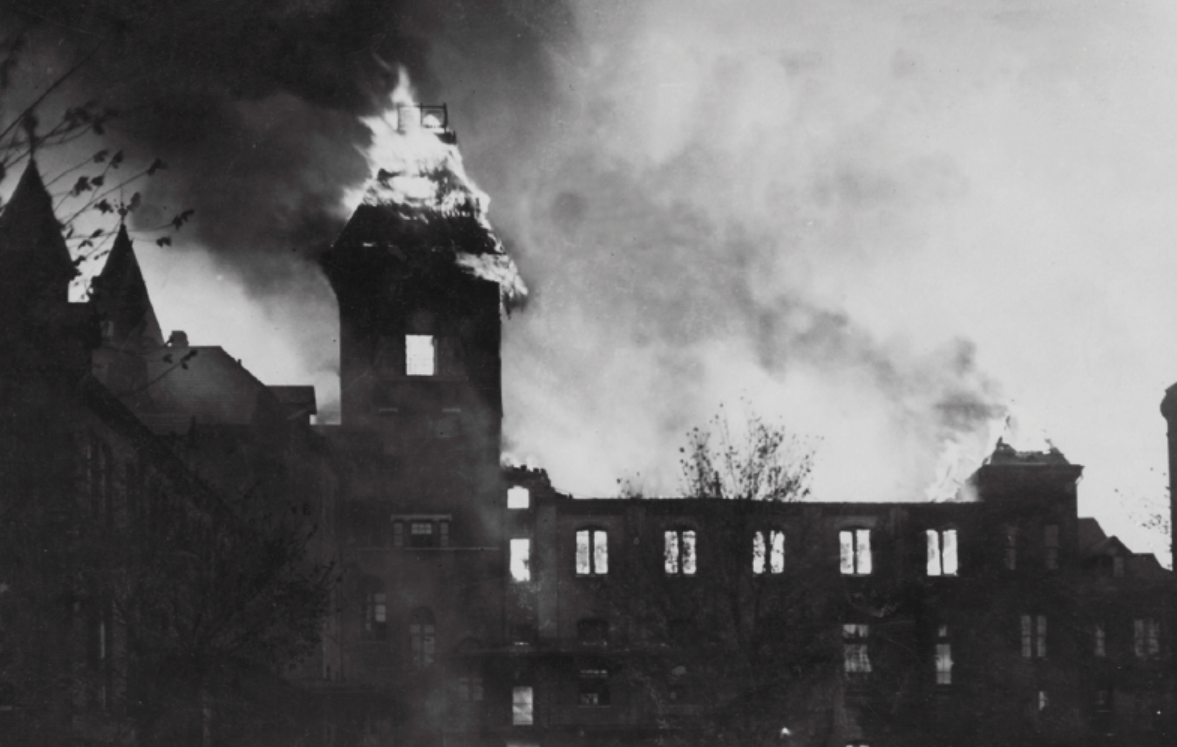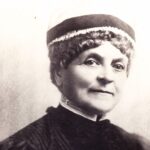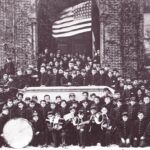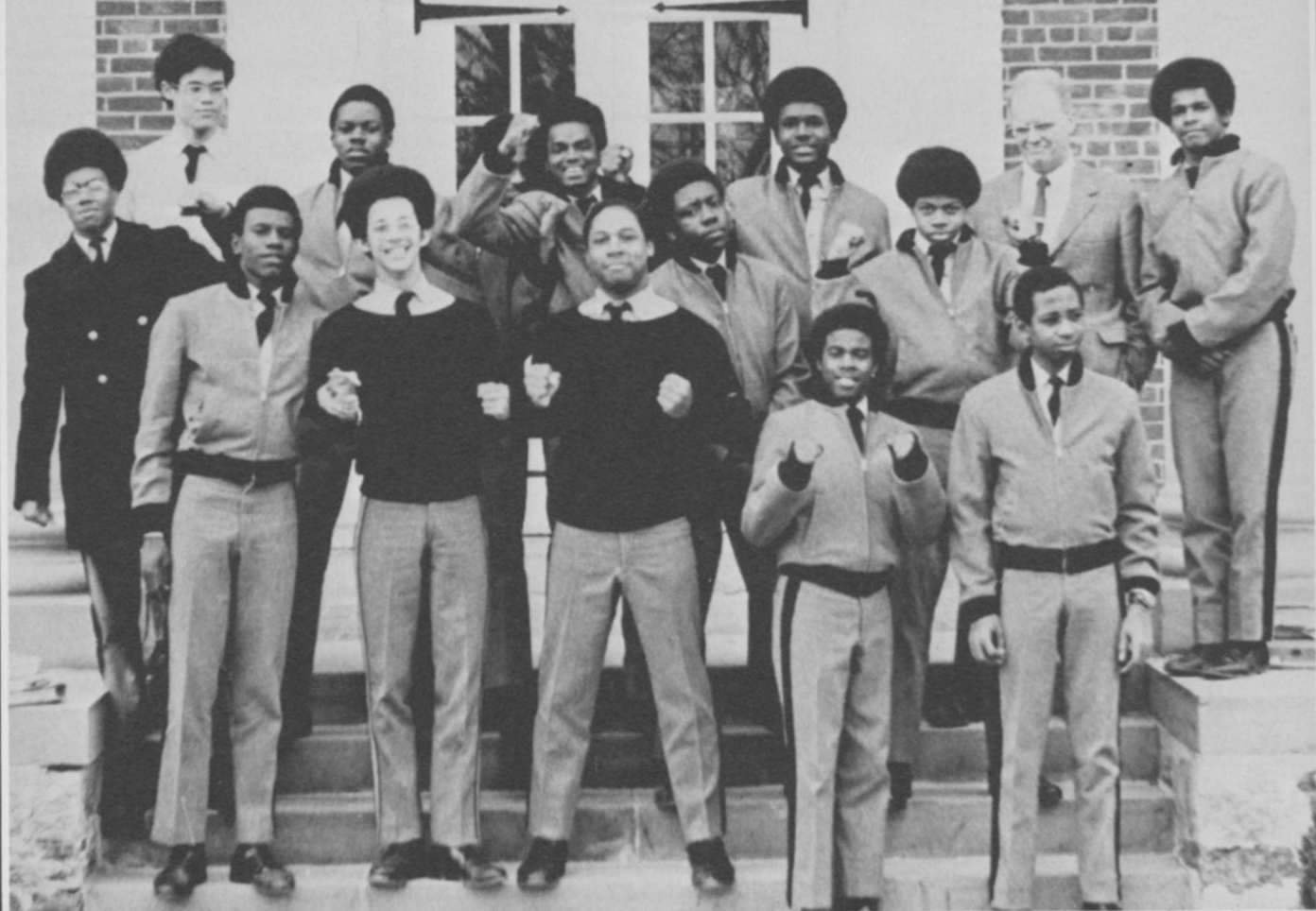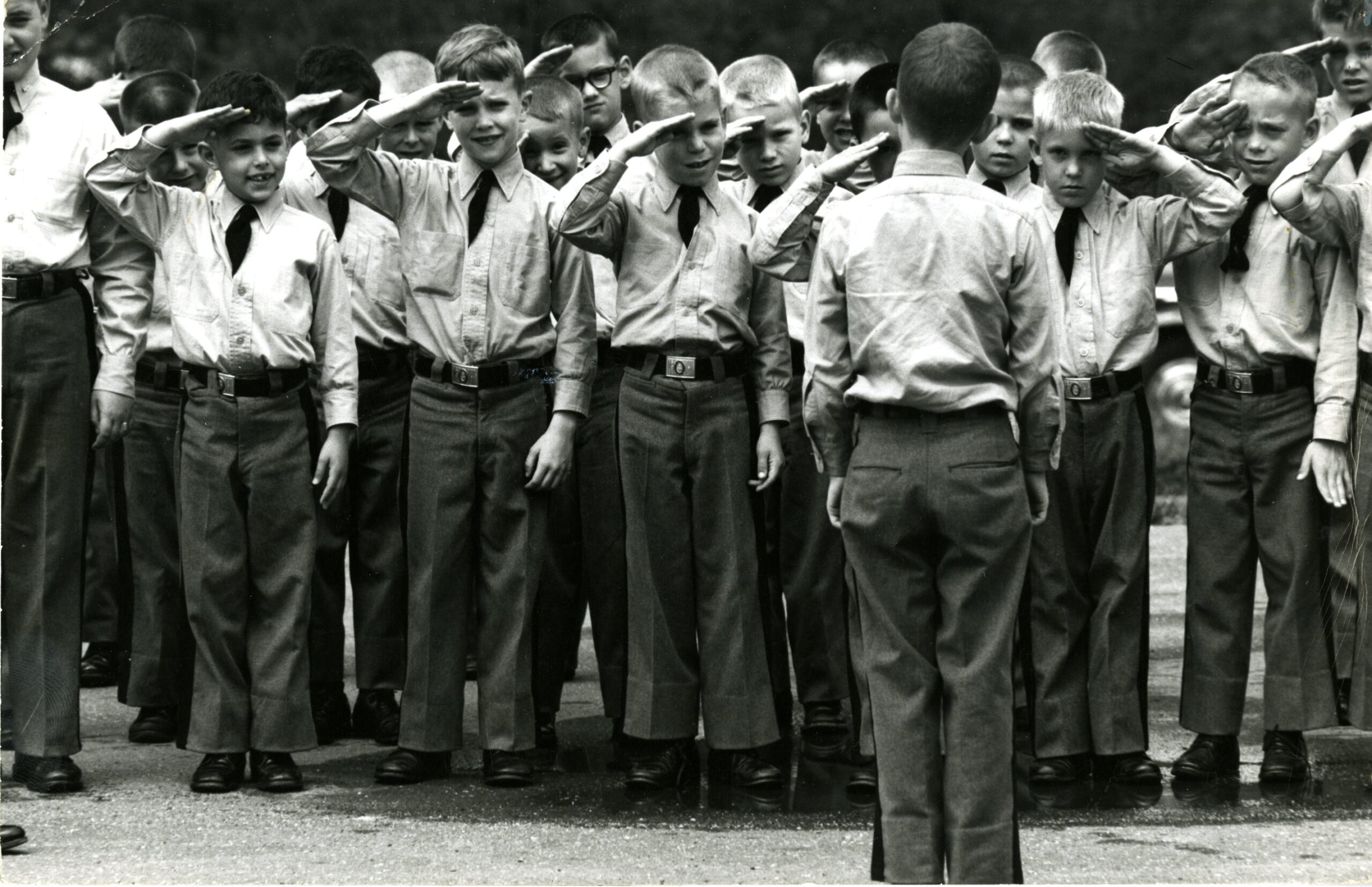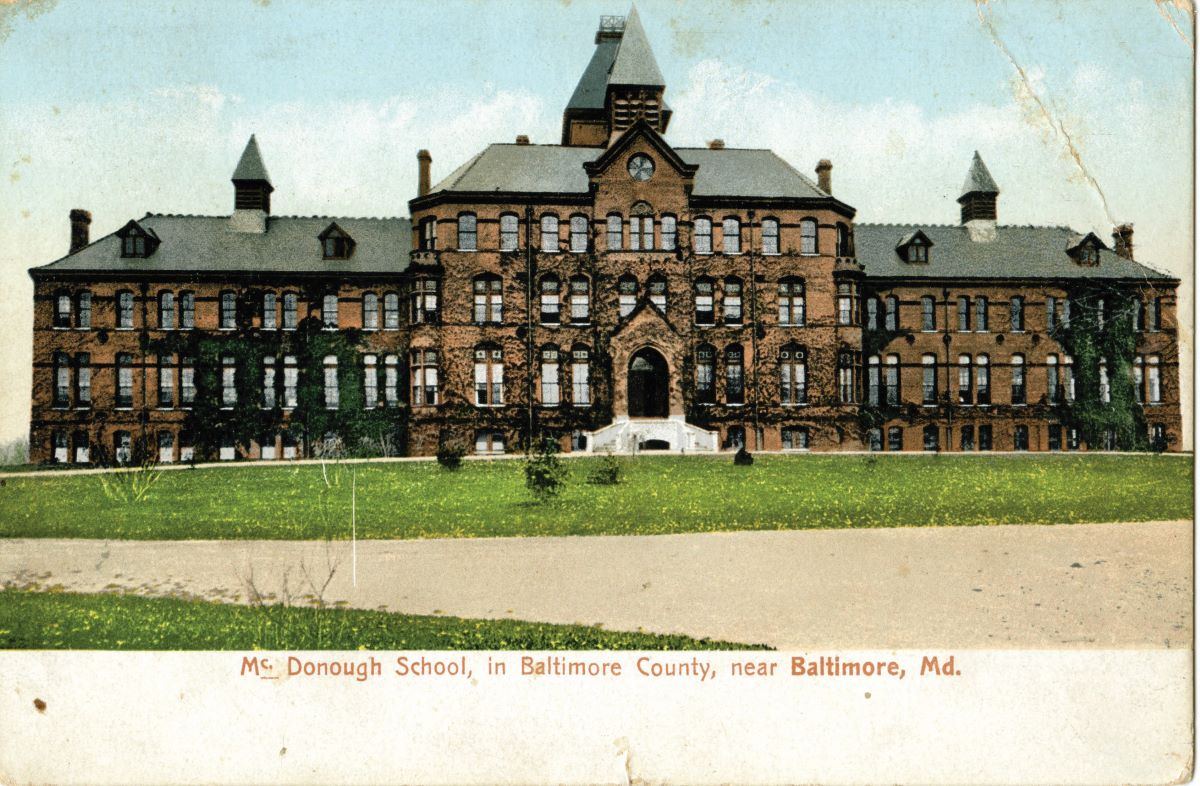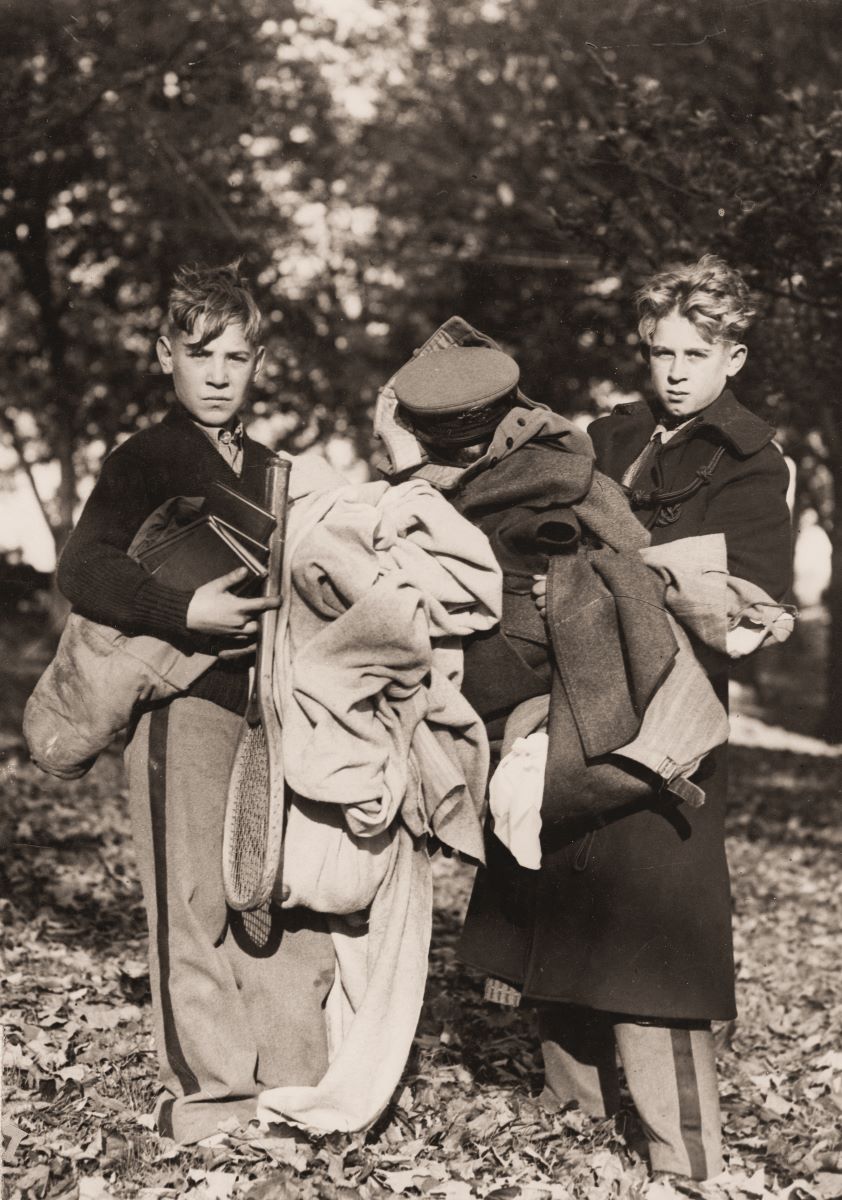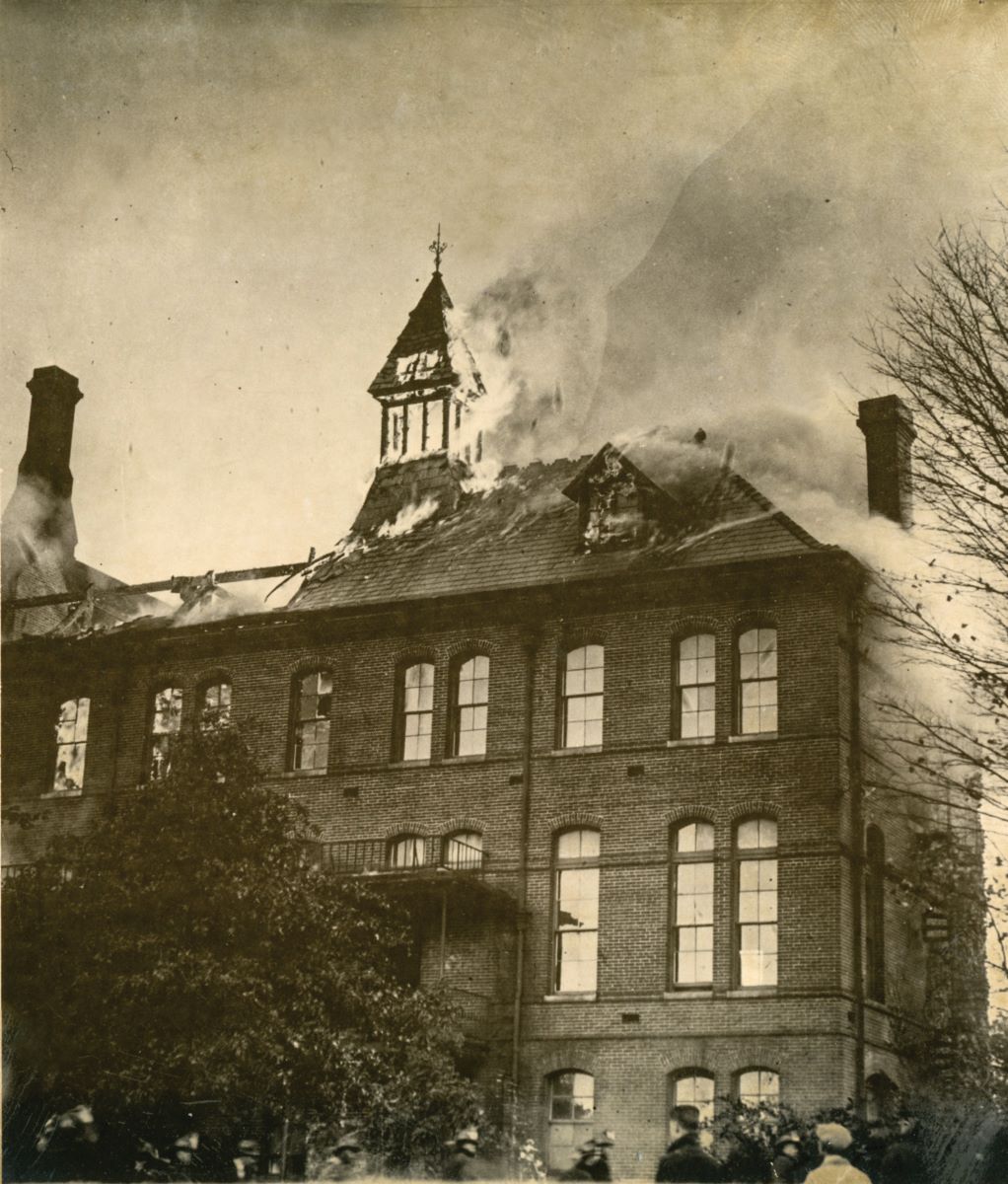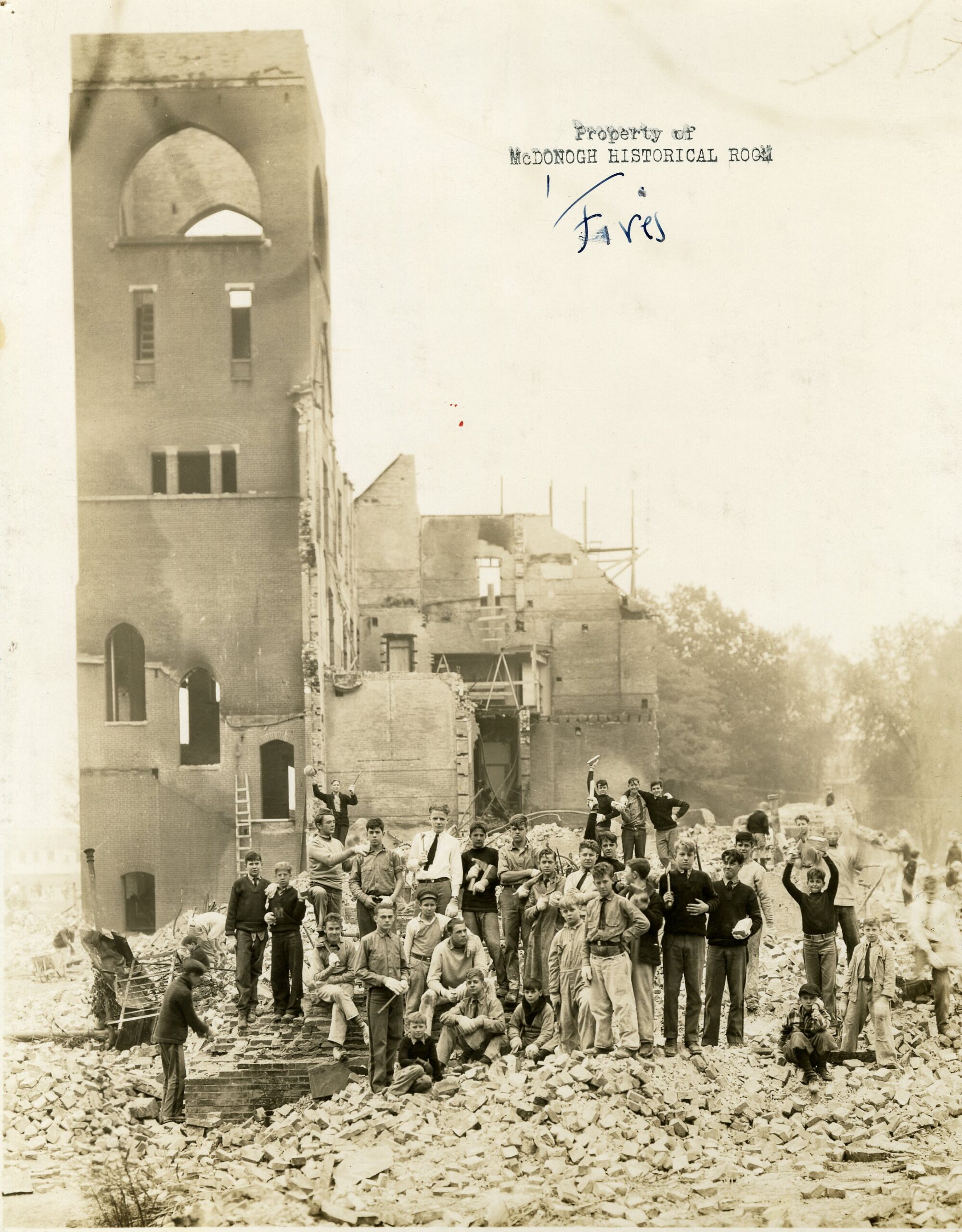Construction on a new brick school building began in 1881 and was completed two years later. The three-story structure, officially called Main Building, was fondly referred to as “New House.” In 1884, a third-floor dormitory annex—the Buzzard’s Roost—was added, and by the following year, all students lived in the building that also included classrooms, a library, a kitchen, a dining room, and a linen room.
In the early morning hours of October 24, 1928, a fire raged through “New House.” According to numerous newspaper accounts, the fire apparently started in the linen room in the basement of the building’s west wing. Believing the fire was contained to the west wing, some faculty and older students entered the other dormitories and salvaged students’ clothing by throwing them out of the second and third-story windows; other groups saved books from the library, the school papers, the safe, and valuable portraits from the first floor.” However, unbeknown to all, the basement of the building was ablaze and the flames swept up an air shaft to the roof, engulfing the center of the building. The ceiling caved in and flaming debris rained down. Nine hours after the fire was discovered, firemen still were pumping water into the structure to prevent the blaze from possibly spreading to the gymnasium and cottages surrounding the building. Thankfully, no one was injured, and students did not miss a day of school.
After the fire, Headmaster Doc Lamborn said a new McDonogh would rise phoenix-like from the ashes. But first, funds were needed. In addition to the Depression and the stock market crash, alumni who had been scholarship students were in no sense wealthy. Former Headmaster Bob Lamborn recalls that students marched down Charles Street to City Hall and then seniors walked back up Charles Street making appeals to the shops along the way. Funds were raised, loans were negotiated, and a new McDonogh rose. Read more on pages 38-39 in the Winter 2019 issue of McDonogh Magazine.
